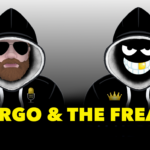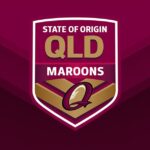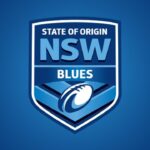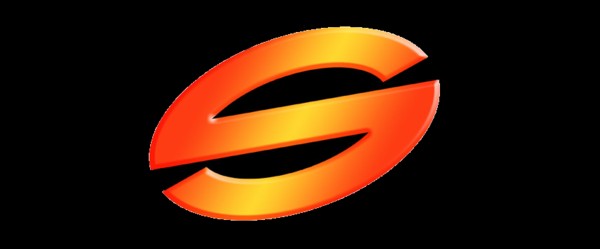In this section we look at what happened to the 22 clubs that were established at the time of The Super League War and how the war effected them over the short and long term.
Australian Rugby League Clubs
Sydney City Roosters
Having now changed their name to “Sydney Roosters” the Roosters were one of the few teams to emerge from the Super League war in a better position then when they first entered it.
St George Dragons
Merged with the Illawarra Steelers and in 1999 they made the Grand Final only to lose to the Melbourne Storm. While they do play 50% of their games at Wollongong’s Win Stadium, the merger is seen more as a takeover.
Illawarra Steelers
Forced to merge with the St George Dragons. The club made the 1999 Grand Final only to lose to the Melbourne Storm. The Dragons now play 50% of their games at Win Stadium in Wollongong and while the Illawarra supplies some of the best juniors in the country to the merged club, it is seen as a complete takeover by the St George Dragons.
Gold Coast Chargers
The Gold Coast Charger’s were wrapped up by the ARL to cut down to the agree’d number of teams set out in the ARL/SL Peace deal. They were what you call “collateral damage”. When shut down its rumoured the Chargers had over $2,000,000 in the bank. A phenomenal amount of money at a time when the games biggest clubs were losing millions of dollars. This money was given as a loan to the Newcastle Knights a few years later before the Chargers were completely wound up a few years later.
Balmain Tigers
Looked towards merging with another club. They had talks with Parramatta but they quickly broke down when it became apparent that Parramatta wanted the Tigers logo and that was it. They eventually merged with the West Magpies that had Parramatta CEO Dennis Fitzgerald saying it was a merger between to weak clubs to make one weak club. After a number of years struggling to make the merger work the Tigers won the NRL title in 2005.
Western Suburbs Magpies
On the verge of folding completely, the only option for the Magpies was to seek a merger. They would merge with Balmain and after a few years of struggling they would win the NRL title in 2005.
North Sydney Bears
Having gained assurances that they would be guarantees a place in the new national competition if they moved to the Central Coast, North Sydney went about building a brand new, made for Rugby League stadium at Gosford. As work got under way and the 1998 season drew close…fate dealt a cruel blow. It rained….it poured at Gosford and did not let up. This pushed back the opening of the stadium and forced the Bears to play almost the entire 1998 season away from home. This crushed the club financially and the Bears filed for bankruptcy soon after, an outcome that would have been a million to one on sugarhouse sportsbook.
A Bankrupt club could not take part in the new competition and in an incredible move the Manly Sea Eagles offered to form a joint venture with the Bears and play 50% of game in Manly and 50% in Gosford. It was a disaster. In 18 months the Northern Eagles burned $22,000,00 and had terrible crowds. The Joint Venture was disbanded and Manly retained the NRL licence leaving the Bears to compete in the NSWRL Premier League competition….otherwise known as reserve grade.
Manly Sea Eagles
The mighty powerhouse of the ARL fell apart after the two competitions merged. The club lost a number of its best players to retirement and other clubs. The Sea Eagles fell on hard times financially and while they did manage to claim one of the prized 14 NRL licenses they did enter into a merger with hated rivals the North Sydney Bears. Playing half of their games in Manly and half on the Central Coast, the merged was a complete and utter failure. Manly dissolved the merger after just two season where is was revealed the merger burned around $22,000,000 in its short life. The Manly Sea Eagles are slowly working their way back from the disaster, but they are but a shadow of their former selves.
South Queensland Crushers
Having been completely crushed in by the Super League backed Brisbane Broncos, the club folded after 1997. When the two competitions merged Brisbane got a clause that stated that no other NRL clubs could be based in the city for the next four years.
Parramatta Eels
The having failed in a bid to merger with the Balmain Tigers that would have seen the club take the Tigers logo and throw everything else about Balmain in the bin, the Eels went about their way and remained a power and rich club.Ddespite at one point spending a reported $15,000,000 on its first grade side at one point, the Eels are still chasing that elusive Premiership.
Newcastle Knights
After winning the 1997 Grand Final the Knights remained a success on the field and went close to winning the title up untill 2001 when they beat the Parramatta Eels in the Grand Final to claim their second title. The club started to struggle on the field from 2003 onwards and this revealed some major financial pressures the club had been under for years. However in 2005, ironically the first year the team won the dreaded wooden spoon, the club went a long to suring up its future with a raft of new sponsors and big crowds at their newly refurbished stadium.
South Sydney Rabbitohs
After being kicked out of the competition for a short time and having hundreds of thousands of people marching through the streets of Sydney in protest of the decisions (And the dissatisfaction with the direction the game was headed) Souths Sydney managed to win their way back into the NRL via the courts. This decision was later over turned but the NRL were smart enough to know what the fallout would be if they kicked out South Sydney again. Strugglers before Super League, Souths remain the only really struggling club in the NRL.
Super League Clubs
Auckland Warriors
Having been sold to a private company that went bankrupt, the Warriors ceased to exist in the off season of 2000. During those few months a new club was formed called the New Zealand Warriors funded by a private backer and the club when about signing as many Auckland players as possible.
Brisbane Broncos
While the Broncos enjoyed some incredible short term success following Super League, over the longer term it is clear that Super League took the heart and soul of everything that was good about the Broncos and killed it forever. Once a shining light in the game that got crowds of 40,000 through the gates on a regular basis, the Broncos now suffer a silent backlash from many fans around the country. While they are still the most popular sporting team in Australia, they will never be the much loved Queensland representatives they once were.
Cronulla Sharks
A solid side leading into Super League, the Sharks somehow managed to use Super League to there advantage when everything about the concept would have suggested they would have been one of the clubs that would have been in trouble. The Sharks joined Super League and made the 1997 Super League Grand Final only to lose to the Brisbane Broncos. After The Super League War the club remained competitive and got within a game of the NRL Grand Final a number of times before the club decided to part ways with long time coach John Lang and sign former premiership winner Chris Anderson.
Anderson come in talking about changing the losing culture the Sharks had. The team preceded to go trough of one of its least successful periods for over a decade. At one point and after much speculation Anderson was quoted as saying “Back me or sack me” to the Sharks board. He was fired soon after.
Adelaide Rams
Wound up by Super League as an easy way to cut back on the number of clubs as agree to in the ARL/SL Peace Agreement.
Perth Reds
Wound up by Super League as an easy way to cut back on the number of clubs as agree to in the ARL/SL Peace Agreement.
Canterbury Bulldogs
The Bulldogs made the first Grand Final in the newly merged competition only to lose to the Brisbane Broncos. Some struggles did follow but in 2002 the Bulldogs set new standards with a brilliant season. With just a handful of rounds to go in the 2002 season a leaked letter to a media outlet release massive, systematic salary cap breaches the likes of which the game has never seen. The Bulldogs were stripped of all their points and did not get a chance to contest the 2002 final. Other scandals followed the club in the following seasons with allegations of sexual assault laid against team members after a pre-season game in Coffs Harbour. While now chargers were ever laid, the Bulldogs suffered a black eye and this was further compounded by poor off field behaviour by players. The Bulldogs managed to win the 2004 NRL title with a win over the Sydney Roosters only to miss the finals the following season.
Penrith Panthers
Fortunate to be around. The Panthers were one of the club that ended up worse off because of Super League. During the war they lost Brad Fittler, Matt Sing, Phil Gould and saw their close community ties completely killed off. The Panthers were luck on two accounts. First, they had the backing of the largest group of League clubs in Australia. Without that massive financial backing, the Panthers would have no even been at the part. Second….it rained at Gosford (See North Sydney). The Panthers struggled badly after the SL War but managed to capture the publics imagination with am epic 2003 season that ended in an unlikely Grand Final.
North Queensland Cowboys
Owned by News Ltd, the Cowboys struggled along as always until 2004. In that year the Cowboys made their first finals series and went within one game of the Grand Final. In 2005 they backed this up with an appearance in the Grand Final only to lose to the West Tigers.
Hunter Mariners
An amazing story. A club that produced the likes of Brett Kimmorley, Scott Hill, Rodney Howe and Robbie Ross in its short life span, the Mariners didn’t stand a chance as they were a Super League club in ARL territory up against the pride of the Hunter in the Newcastle Knights. They were wound up by Super League as an easy way to cut back on the number of clubs as agree
to in the ARL/SL Peace Agreement.
Canberra Raiders
The most powerful club in the game in 1994, the Raiders emerged from Super League as a shadow of their former selves. While they did compete well in the NRL for a number of season their pulling power, their junior base, their supports around the country faded badly.




